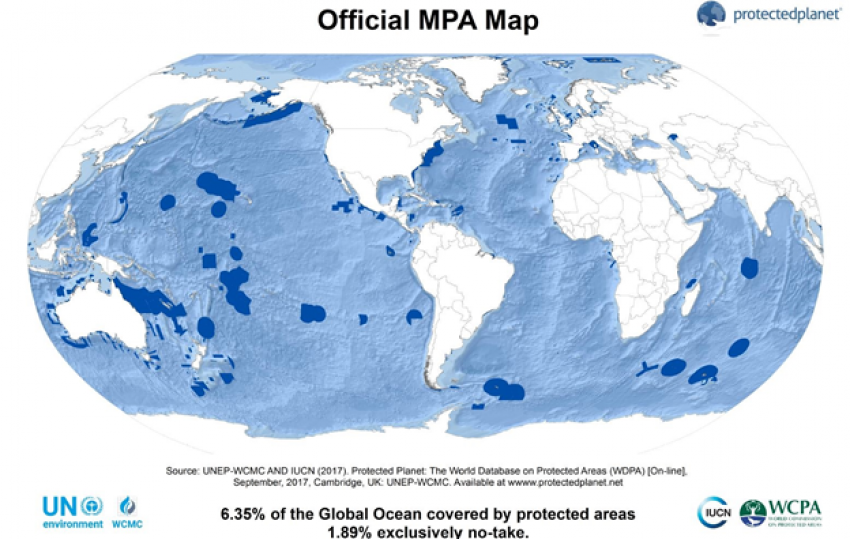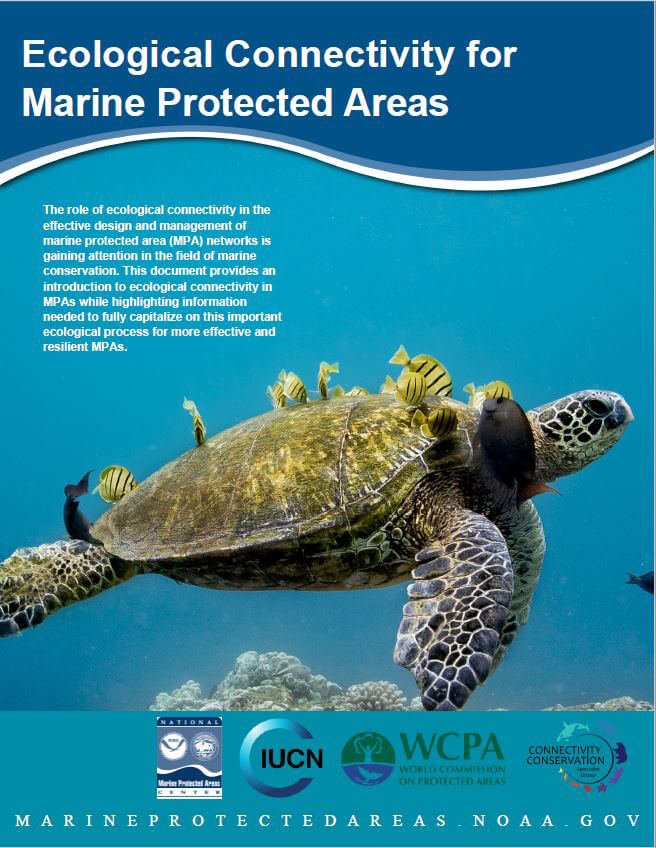Marine protected areas (MPAs) are an effective tool for restoring ocean biodiversity and ecosystem services.
Marine Protected Areas (MPAs) involve the protective management of natural areas according to pre-defined management objectives. MPAs can be conserved for a number of reasons including economic resources, biodiversity conservation, and species protection. They are created by delineating zones with permitted and non-permitted uses within that zone.
Marine Protected Areas (MPAs) are areas of the ocean set aside for long-term conservation aims. MPAs support climate change adaptation and mitigation while providing other ecosystem services.
International Union for Conservation of Nature (IUCN)
It is vital to have in depth knowledge of the area so as to define ecological boundaries and set objectives for the MPA. It is also important to have the support of the public and established techniques for surveillance and monitoring of compliance. IUCN engages in advocating for the expansion of the MPA network through reliable science and by engaging with local stakeholders.

Today, around 15.000 implemented MPAs cover around 7.5% of the Oceans. At present less than 2 % of the ocean is highly protected. This low level of ocean protection is due largely to conflicts with fisheries and other extractive uses.
Globally, we have not reached the UN SDG no. 14 target reaching 10% of the oceans protected under MPAs by 2020. The goals set by the United Nations to reach 30% by 2030 are far higher. It is not as simple as drawing a line on the map however. Most existing MPAs do not have enough human and financial resources to properly implement conservation and management measures.
The U.S. has established nearly 1,000 MPAs (as defined by the International Union for the Conservation of Nature (IUCN)) to protect important places in our ocean, estuaries, coastal waters, and Great Lakes.

In California MPAs are named, discrete geographic marine or estuarine areas designed to protect or conserve marine life and habitat. There are different marine managed areas classifications used in California’s MPA network. This includes three MPA designations (State Marine Reserve, State Marine Conservation Area, State Marine Park), a marine recreational management area (State Marine Recreational Management Area), and special closures. Statewide, there are a total of 124 MPAs within the network, and ultimately increased the protection of California waters from 2.7% in 1999 to 16.1% in 2012.
MPAs support climate change adaptation and mitigation while providing other ecosystem services. New research shows that marine protected areas on an international level might be a solution to mitigating climate change.
Do Sharks Benefit From MPAS
The benefit of marine protected areas depends on the location, the scale, fishing restrictions, and the enforcement. Small sharks that do not range far, like coral cat sharks or swell sharks, will benefit from fisheries protection and habitat protection inside an MPA. Mid ranging species like Big skates or migratory species like white sharks require larger protected areas or additional protection from fishing, as they experience in US waters. These sharks will benefit from fishing and the additional biomass of food sources in marine protected areas, and in the case of white sharks, the protection of their food from hunting, namely marine mammals. For wide ranging species, large MPAs will protect them from fihsing and protect large intact areas of habitat. National Marine Sanctuaries in the USA are large MPAs that still allow recreational and commercial fishing. However, these MPAs will protect the migratory rays and skates from bottom trawling, and prohibit harmful oil exploration and drilling. The newly proposed Papahānaumokuākea National Marine Sanctuary will provide large scale protection and scientific management protecting large wandering species like tiger sharks from commercial longlining. However, sharks and other species are still vulnerable to external impacts like sea surface temperature or pollution crossing the lines into the MPA.
By regulating trophic levels in marine ecosystems, sharks can regulate health and stability of ecosystems and facilitate carbon sinks.
How can YOU make a difference?
The list from the Marine Conservation Institute outline some of the most impactful actions that you can do to help.
- Learn about and support your local or national marine protected areas—research opportunities to volunteer with them. The most effective protected areas are the ones with strong local support!
- If you travel, visit marine protected areas that are conserving marine wildlife. Blue Parks are a great example!
- Take only pictures, and leave only footprints.
- Tell your legislators that you think protecting ocean wildlife is important.
- Tell your legislators that you think acting on climate change is important.
- Spread the word! Talk with others about ocean wildlife, ocean protections, and about what we can do to save ocean ecosystems.
- Stop using single-use plastics (e.g., grocery bags, straws, to-go containers, bottled drinks – the list is long) and cut unnecessary products out of your routines. Instead opt for reusable items. Let companies know why you are choosing or avoiding their products.
- Reduce your use of fossil fuels: ride your bike, use electric cars and public transit, attend meetings and conferences virtually to reduce long-distance travel, power your home with renewable energy, and eat less meat.
- If you eat seafood, buy only sustainably fished seafood.
- Support conservation organizations like Shark Stewards working to safeguard marine biodiversity.
rev. 09/20/2024/ dmc